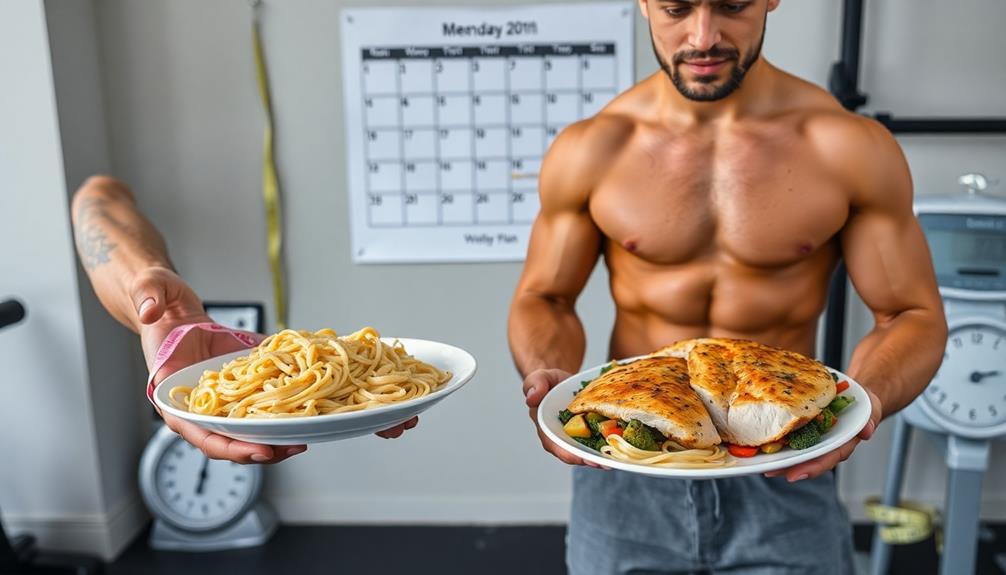Carb cycling for cutting involves alternating between high-carb and low-carb days to optimize fat loss while preserving muscle. You'll calculate your macronutrient needs, design a schedule that aligns with your workouts, and choose the right foods for each day type. On high-carb days, you'll fuel intense workouts and replenish energy stores. Low-carb days focus on burning fat and increasing protein intake. It's pivotal to adjust your plan based on progress and avoid common mistakes like undereating protein or overeating on high-carb days. By following a structured approach and monitoring your results, you'll maximize the benefits of carb cycling for your cutting goals. Let's explore the step-by-step process to implement this effective strategy.
Core Insight
- Calculate your TDEE and set macronutrient goals, prioritizing protein intake for muscle preservation during cutting.
- Design a carb cycling schedule alternating between high-carb, moderate-carb, and low-carb days based on workout intensity.
- Choose complex carbs on high-carb days, lean proteins and healthy fats on low-carb days.
- Align high-carb days with intense workouts and use post-workout carbs for optimal recovery.
- Monitor progress and adjust macronutrient ratios as you lose weight to maintain effectiveness.
Understanding Carb Cycling Basics
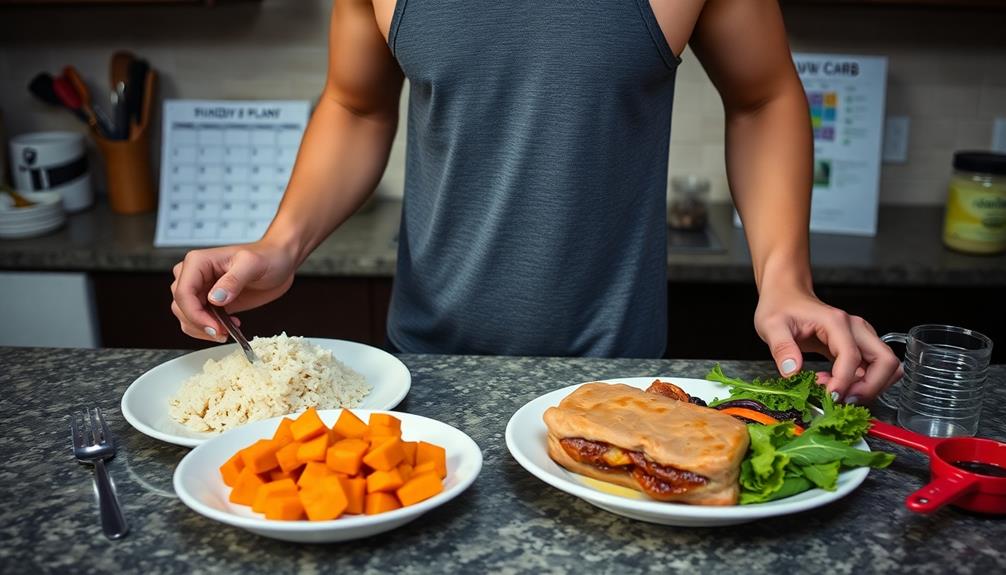
Carb cycling is a way of eating where you switch between high-carb and low-carb days during the week. This helps you change your body's metabolism and hormone levels to burn more fat while keeping muscle. Fat burners can help boost your metabolism and fat burning on low-carb days.
On high-carb days, you'll eat more carbs to fill up your energy stores and fuel tough workouts. These days usually match up with your hardest training sessions. Low-carb days focus on eating fewer calories and getting your body to burn fat for energy.
To make carb cycling work, you need to be consistent and eat the right foods at the right times. Plan your meals carefully, making sure you get enough protein and healthy fats while changing your carb amounts. By doing this, you may improve how your body handles insulin, burn more fat, and keep muscle while cutting.
Benefits of Carb Cycling
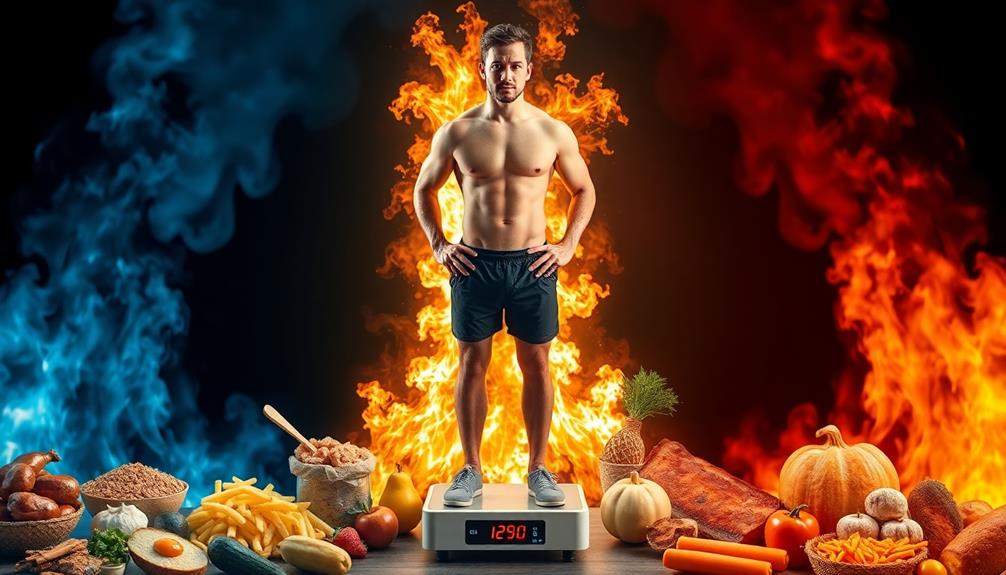
Carb cycling offers many benefits for fitness enthusiasts. It gives you flexibility in your diet while helping you cut fat. Carb cycling can improve your insulin sensitivity, which means your body uses carbs better. On low-carb days, you'll burn more fat because your body uses stored fat for energy. Carb cycling is a natural way to boost fat burning without relying only on supplements.
Carb cycling can also help you keep muscle while eating fewer calories. It helps control hormones like leptin, which affect metabolism and hunger. You'll likely have more energy on high-carb days, so you can have tougher workouts. Carb cycling can also stop your metabolism from slowing down, which often happens when you cut calories for a long time. This keeps your weight loss going strong.
Determining Your Macronutrient Needs
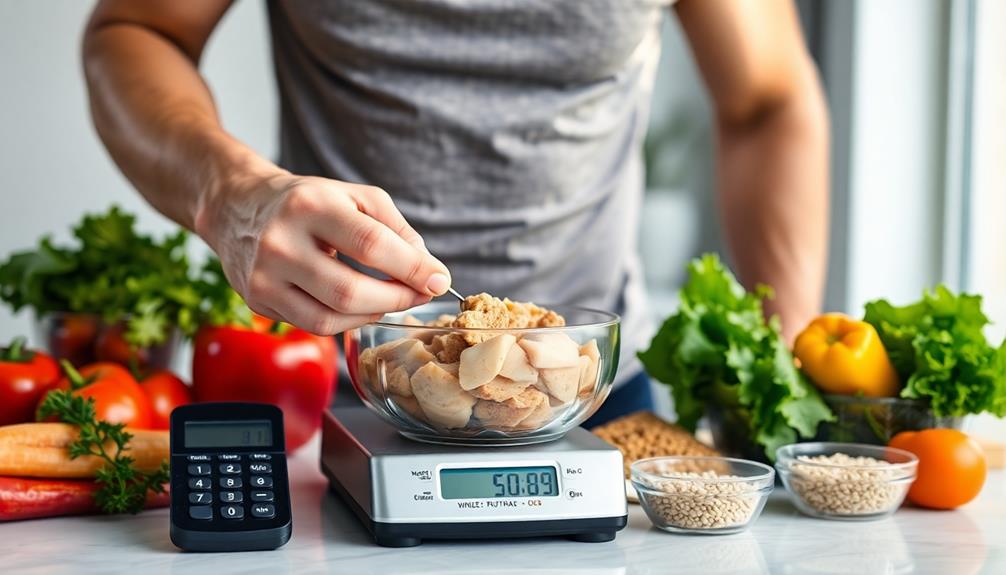
Figuring out your macronutrient needs is the first step in carb cycling. Use an online calculator or talk to a nutritionist to find your Total Daily Energy Expenditure (TDEE). This will tell you how many calories you need each day. When planning your nutrition, think about how certain supplements like HMB can work together with your carb cycling strategy for the best results.
Next, figure out how much protein you need. Try to get 1.6 to 2.2 grams of protein for each kilogram of your body weight. This will help you keep your muscle mass while you're cutting.
For fats, set aside 20-30% of your total calories. This will make sure you're getting the essential fatty acids you need and keeping your hormones working well.
Lastly, give the rest of your calories to carbohydrates. This amount will change based on your carb cycling plan. On high-carb days, you'll eat more carbs, and on low-carb days, you'll eat a lot less.
High-Carb Vs Low-Carb Days
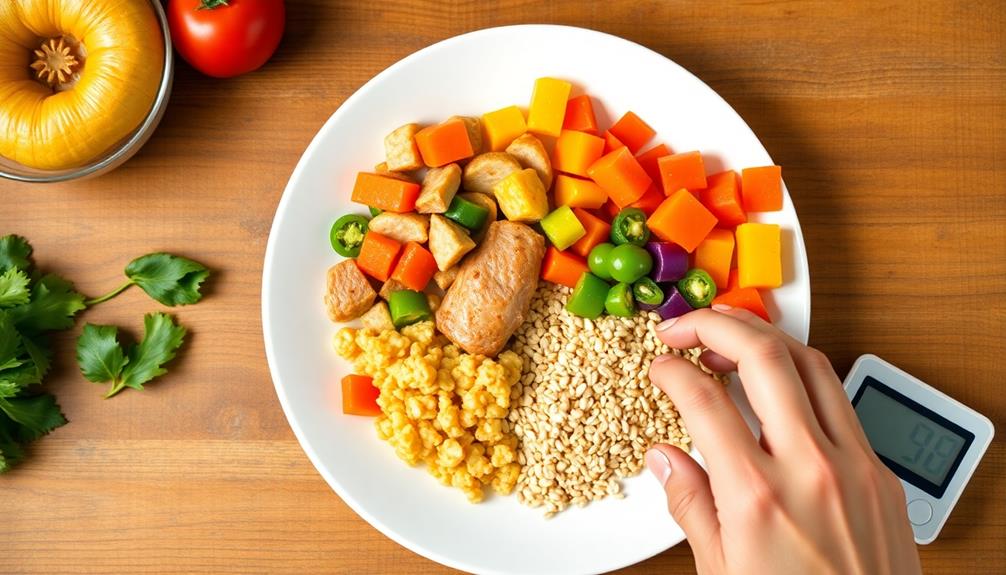
High-carb and low-carb days are the core of carb cycling. You'll switch between days with more carbs and days with fewer carbs. This helps you lose fat while keeping your muscle. Carbs you eat after working out are important. They help refill your energy stores and support muscle recovery.
On high-carb days, you'll eat more carbs to:
- Refill your energy stores
- Fuel tough workouts
- Rev up your metabolism
Low-carb days focus on cutting back on carbs to help you burn fat. You'll usually eat more protein and healthy fats on these days.
How often you have high-carb and low-carb days depends on your goals, how active you are, and your body type. Some people might have two high-carb days a week. Others might have just one. It's important to try different options and find the right balance for you and your goals.
Designing Your Carb Cycling Schedule
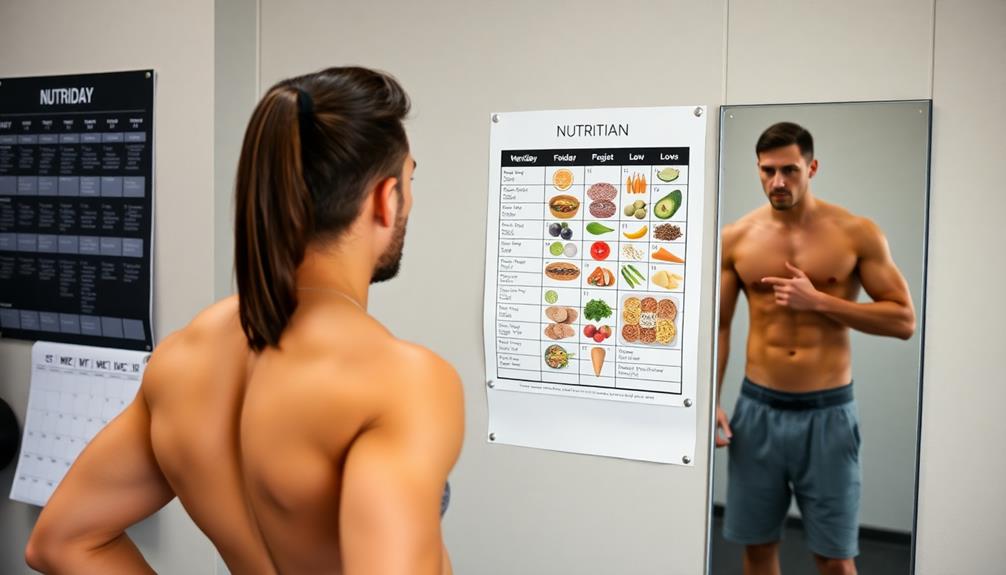
Carb cycling can be an effective way to optimize your nutrition and reach your fitness goals. To create a carb cycling schedule that works for you, start by looking at your training schedule for the week. Identify the days when you'll be doing high-intensity workouts, as these will usually be your high-carb days.
Next, decide how many high-carb, moderate-carb, and low-carb days you want to have each week. This will depend on your specific goals and body type. A typical approach is to have 2-3 high-carb days, 2-3 moderate-carb days, and 1-2 low-carb days per week.
Match your high-carb days with your hardest workouts, moderate-carb days with lighter training sessions, and low-carb days with rest or very light activity. Don't forget to adjust your protein and fat intake on different carb days to make sure you're still eating the right number of calories overall.
Keep track of your progress and be ready to make changes if needed. With a little planning and consistency, carb cycling can help you achieve the results you're looking for.
Choosing the Right Foods

Choosing the right foods is key to making your carb cycling plan work. On high-carb days, eat complex carbs like whole grains, sweet potatoes, legumes, and fruits. These foods give you long-lasting energy and important nutrients. You can also use fast-acting carb powders after your workouts to help your muscles recover quickly.
On low-carb days, focus on lean proteins and healthy fats. Eat things like chicken breast, fish, eggs, avocados, and leafy greens. Keep your carb intake low. Moderate-carb days should be a mix of the two.
No matter what day it is, make sure you eat enough protein to keep your muscles strong while you're cutting. Aim for 1.6-2.2 grams of protein per kilogram of body weight each day. Drink plenty of water and eat different types of vegetables to get the vitamins and minerals you need.
Meal Planning and Preparation
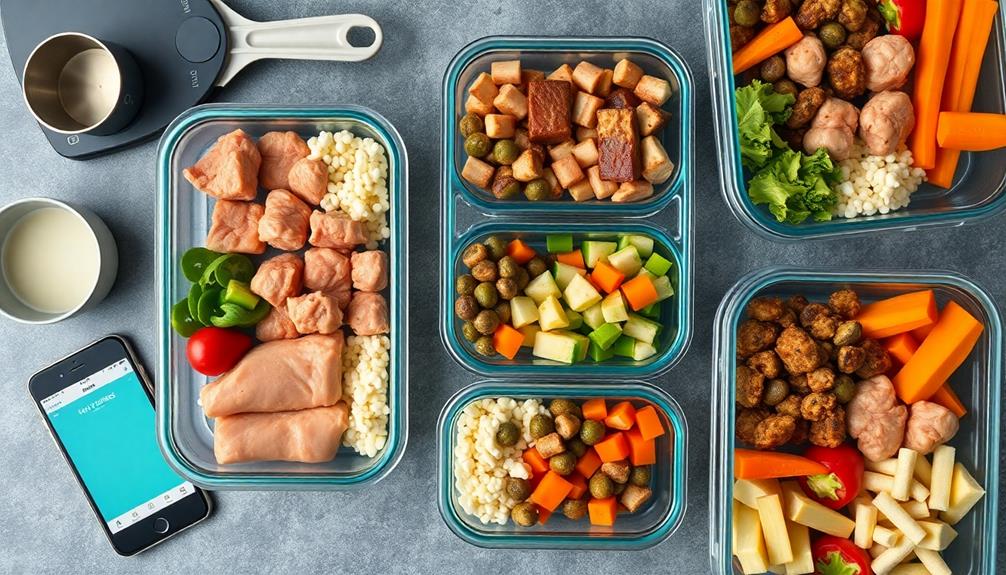
To make carb cycling work, you need to plan your meals for each day. Create a menu for the week that matches your carb cycling schedule. Use a simple template like this to organize your meals:
| Day | Breakfast | Lunch | Dinner | Snack |
|---|---|---|---|---|
| Mon (Low) | Eggs & avocado | Chicken salad | Salmon & veggies | Nuts |
| Tue (High) | Oatmeal & fruit | Turkey sandwich | Brown rice & stir-fry | Greek yogurt |
| Wed (Low) | Protein shake | Tuna lettuce wraps | Beef & broccoli | Cheese |
| Thu (High) | Whole grain toast & PB | Quinoa bowl | Pasta with lean meat | Fruit |
Make your meals ahead of time to stick to your plan. Cook proteins and veggies in big batches. Divide them into portions for each meal.
Exercise and Carb Cycling

Exercising while carb cycling can boost your fat loss. Plan your workouts to match your carb intake for the best results. On high-carb days, do intense exercises like weightlifting or HIIT to use up glycogen and refuel your stores. Stay hydrated during tough workouts, especially when it's hot out. Salt pills can help replace electrolytes lost through sweat.
On low-carb days, try:
- Easy cardio
- Yoga or stretching
- Light activity
These workouts keep your calorie deficit going without needing a lot of carbs. On medium-carb days, mix strength training with cardio. Change your workout intensity if your energy is low from eating fewer carbs. By matching exercise to your carb cycling, you'll burn the most fat while keeping muscle during your cut.
Monitoring Progress and Adjusting
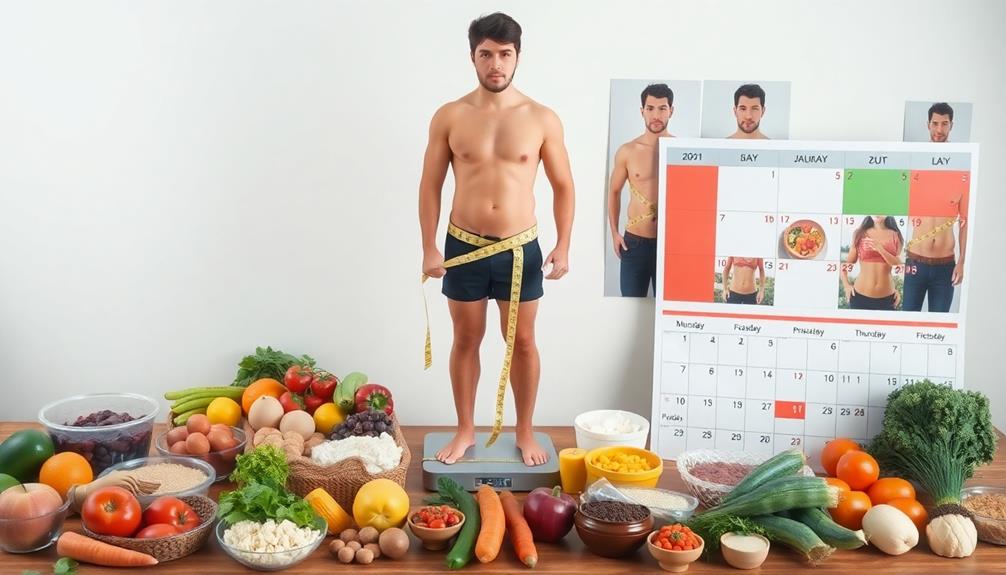
Tracking your progress is essential for successful carb cycling during a cutting phase. Write down everything you eat and drink in a food diary. Each week, record your weight, body measurements, and take progress photos. Notice how your body feels on both high-carb and low-carb days, especially your energy levels and how you perform during workouts.
If you don't see results after a few weeks, make some changes. You may need to eat fewer calories overall, do more cardio, or adjust your carb cycling plan. Try having more low-carb days or fewer high-carb days. Everyone's body is different, so be patient and don't be afraid to try new things.
As you lose weight, your body's needs will change. Regularly check and adjust your macronutrient ratios. Stay open to making changes to your plan throughout your cutting journey to keep making progress.
Common Mistakes to Avoid
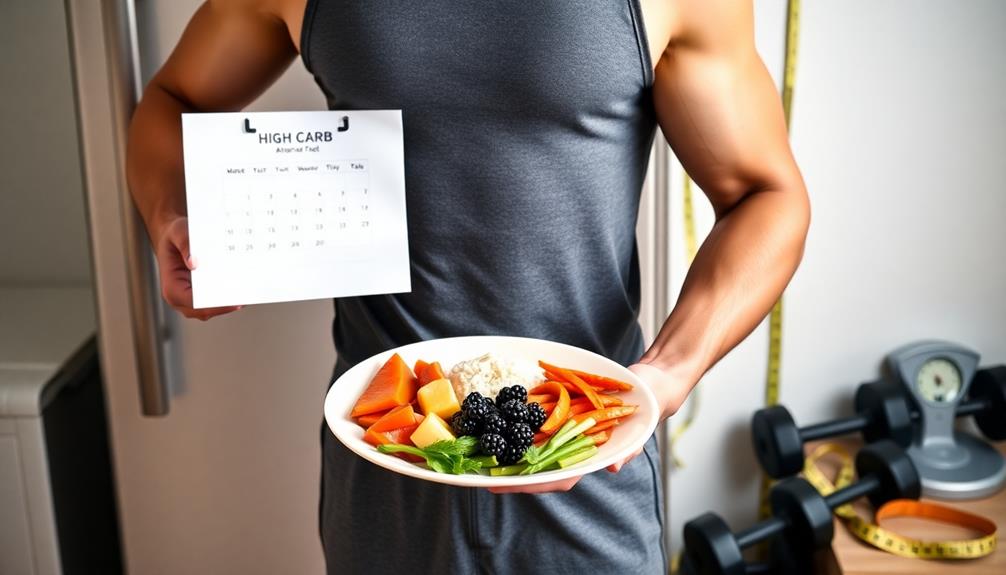
When trying carb cycling for cutting, watch out for these common mistakes:
- Not eating enough protein on low-carb days
- Eating way too many calories on high-carb days
- Not changing your carbs based on how active you are
Eating the right amount of carbs is key for recovery, especially after tough workouts. Think about using post-workout carb powders to refill your glycogen stores.
Frequently Asked Questions
Can Carb Cycling Be Combined With Intermittent Fasting?
Yes, you can combine carb cycling with intermittent fasting. It's a powerful approach to fat loss and muscle preservation. You'll need to plan your carb intake carefully around your eating windows to maximize the benefits of both strategies.
How Long Should I Follow a Carb Cycling Diet Before Seeing Results?
You'll typically see results from carb cycling within 2-4 weeks. However, everyone's body responds differently. Stick to your plan consistently, monitor your progress, and adjust as needed. Don't get discouraged if it takes a bit longer.
Is Carb Cycling Suitable for Vegetarians and Vegans?
Yes, you can definitely follow carb cycling as a vegetarian or vegan. You'll need to focus on plant-based protein sources and carefully plan your meals to guarantee you're meeting your nutritional needs while cycling your carb intake.
Can I Drink Alcohol While on a Carb Cycling Diet?
You can drink alcohol while carb cycling, but it's not recommended. Alcohol provides empty calories and can disrupt your diet's effectiveness. If you do drink, limit your intake and count the carbs in your beverages carefully.
Should I Continue Carb Cycling After Reaching My Weight Loss Goals?
You've reached your weight loss goals, congrats! Now, you can decide if you want to continue carb cycling. It's not necessary, but some people find it helpful for maintaining their weight and optimizing performance long-term.

